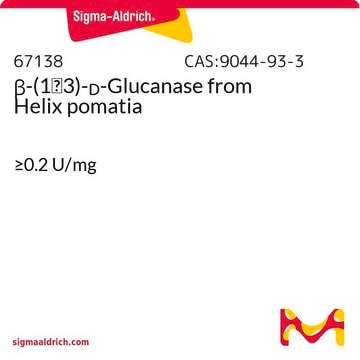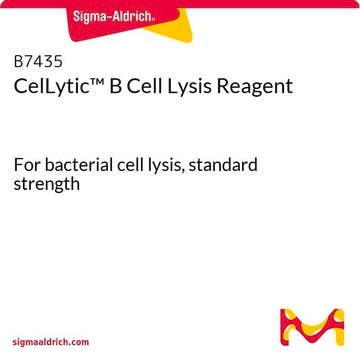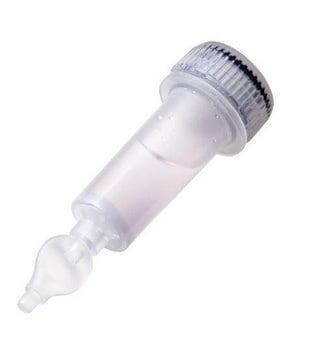H0537
HIS-Select® HF Nickel Affinity Gel
Sinónimos:
Ni-NTA HF resin
Seleccione un Tamaño
MXP 1,897.00
Seleccione un Tamaño
About This Item
MXP 1,897.00
Productos recomendados
Formulario
suspension
Nivel de calidad
técnicas
affinity chromatography: suitable
Matriz
Highly cross-linked 6% Beaded Agarose
capacidad
15 mg/mL, gel binding capacity (protein)(with an approx. 30 kDa protein)
temp. de almacenamiento
2-8°C
Descripción general
Aplicación
Características y beneficios
- High selectivity for higher purity
- Unique non-charged hydrophilic linkage reduced non-specific binding
- Binding Capacity for histidine-tagged protein (His-tag protein) is greater than 15 mg/mL
- Highly cross-linked agarose matrix allows for purification under higher pressures
- Binding under denaturing or non-denaturing conditions
- One-step purification
Forma física
Nota de preparación
Información legal
Palabra de señalización
Danger
Frases de peligro
Consejos de prudencia
Clasificaciones de peligro
Acute Tox. 4 Oral - Aquatic Chronic 2 - Carc. 1A Inhalation - Flam. Liq. 3 - Muta. 2 - Repr. 1B - Resp. Sens. 1 - Skin Irrit. 2 - Skin Sens. 1 - STOT RE 1 - STOT SE 2
Órganos de actuación
Eyes,Central nervous system, Respiratory Tract
Clase de riesgo para el agua (WGK)
WGK 3
Punto de inflamabilidad (°F)
88.0 °F
Punto de inflamabilidad (°C)
31.1 °C
Equipo de protección personal
Eyeshields, Faceshields, Gloves, type ABEK (EN14387) respirator filter
Elija entre una de las versiones más recientes:
¿Ya tiene este producto?
Encuentre la documentación para los productos que ha comprado recientemente en la Biblioteca de documentos.
Los clientes también vieron
Contenido relacionado
Investigue las interacciones proteína-proteína in vitro con análisis pull-down, utilizando métodos de afinidad, pull-down con GST, TAP y co-inmunoprecipitación.
Investigate in vitro protein-protein interactions with pull-down assays, utilizing affinity, GST pull-down, TAP, and co-immunoprecipitation methods.
Active Filters
Nuestro equipo de científicos tiene experiencia en todas las áreas de investigación: Ciencias de la vida, Ciencia de los materiales, Síntesis química, Cromatografía, Analítica y muchas otras.
Póngase en contacto con el Servicio técnico












